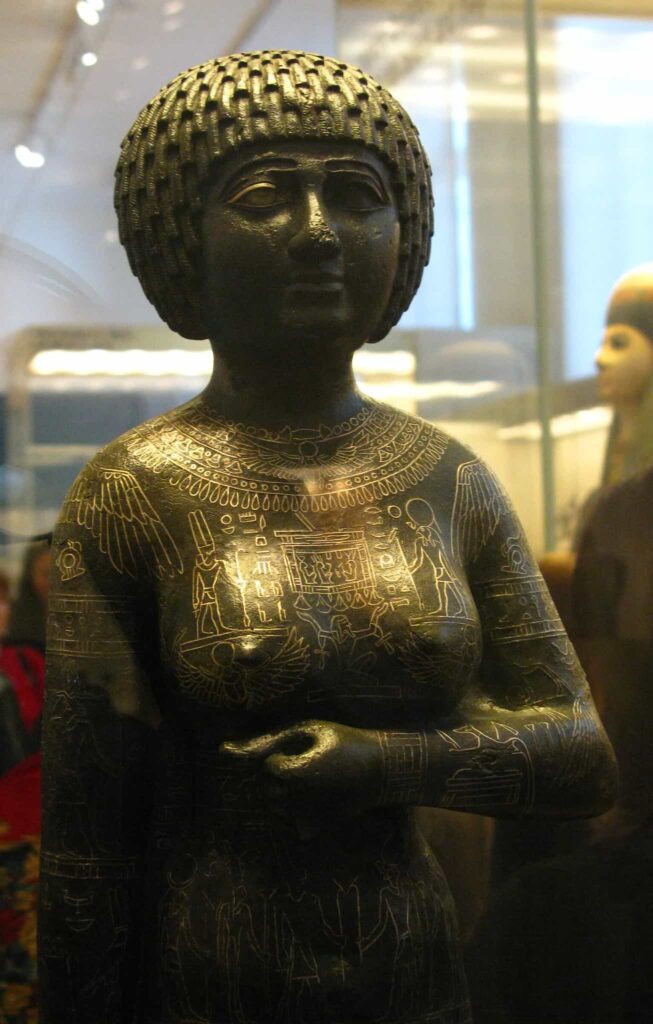The copper alloy hollow cast statue of Princess Takushit serves a multifaceted role in ancient Egyptian ritual and commemoration. Discovered in 1880 on the hill of Kom-Toruga in Lower Egypt, near Lake Mariut south of Alexandria, this artifact exemplifies the convergence of ceremonial, votive, and funerary practices of its time.
During her lifetime, Princess Takushit wielded this statue as an integral part of her ceremonial duties as a priestess. It adorned the sanctuary where she officiated, embodying her connection to the divine and her role in religious rituals.
Upon her passing, the statue transitioned to serve as both a votive offering and a funerary artifact, symbolizing her eternal presence within the sanctuary grounds.
Crafted with meticulous detail, the solid cast statue combines bronze and silver, showcasing the artistic prowess of its creators. It stands as the sole representation of Princess Takushit, daughter of Akanuasa, a prominent figure during the reign of King Piye.
The statue portrays her in a dynamic pose, captured mid-stride with a commanding presence. Her attire, a flowing chiton adorned with intricate motifs in damascened electrum, reflects her status and spiritual significance.
Takushit’s facial features, characterized by intensity and purpose, convey her authority and devotion to her religious duties. The hieroglyphic inscriptions and depictions of Lower Egyptian deities intricately etched onto the statue further emphasize its sacred purpose, serving as prayers and dedications to the gods she worshipped.
Barefoot and poised in a walking stance, Princess Takushit’s statue exudes a lifelike realism, enhancing its role as a spiritual conduit between the earthly realm and the divine.
Her stance communicates authority and reverence, adorned with symbols of her esteemed religious role and social stature. In her bent left arm, she once grasped the fly-whisk scepter, a symbol of her office, while her extended right hand held the menit, a musical instrument integral to temple rituals.
Draped around her neck is a protective wesekh or usekh collar, complemented by two elegantly crafted bracelets, each a testament to her status and significance.
This statue finds its closest comparison in the likeness of Karomama, the Divine Adoratrice of Amun during Egypt’s 22nd Dynasty (924-887 BC), housed in the Louvre Museum.
These statues, separated by time yet linked by their representation of powerful priestesses, exemplify the continuity and evolution of religious and ceremonial practices in ancient Egypt.
Intricate etchings, originally adorned with precious metals, and ivory inlays once embellished the statue, highlighting details such as the eyes, eyebrows, and toenails. While the original base is lost to time, each foot retains a metal tang, suggesting it was once firmly anchored, likely within a ceremonial or funerary setting.
Dating back to the Third Intermediate Period, specifically the late 25th Dynasty around 670 BC, this masterpiece now resides in the National Archaeological Museum of Athens, Greece.










